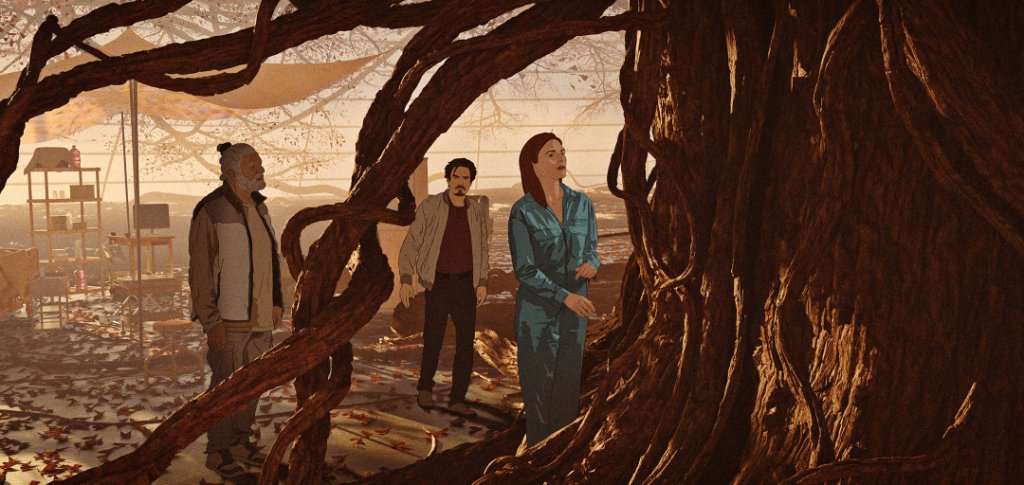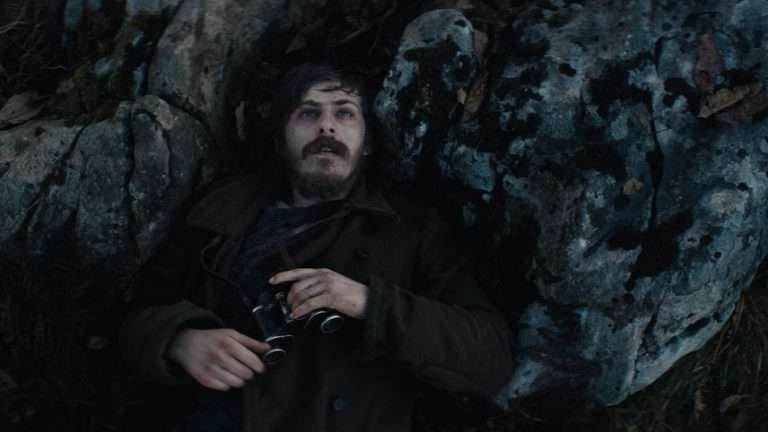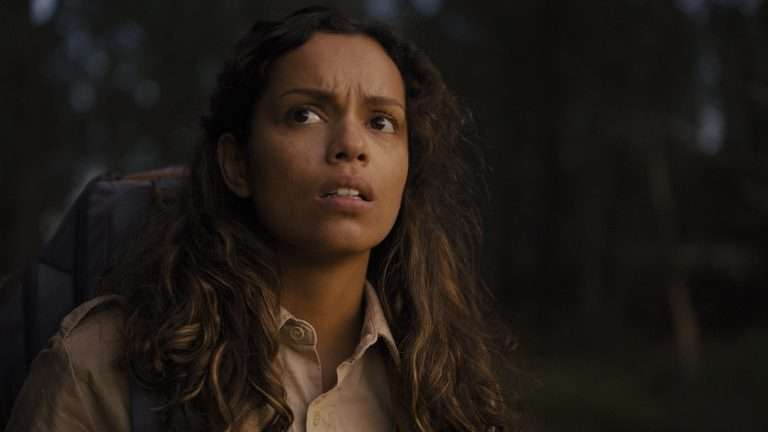The Hungarian animated drama White Plastic Sky swiftly balances realism and sci-fi in its idea, its presentation, and its ultimate message. This 110-minute narrative contains an ever-present selfishness vs. selflessness narrative that exists beneath the safe White Plastic Sky and the not-so-safe ‘Blue Natural Sky.’
The Earth in 2123 is a wasteland. Things seem bleak with famine having taken over. Humankind has found a way to survive, though, but at a cost. Individuals survive within the White Plastic Sky (a domed city) until it is time for them to give back to society. To be fair, this is something they do even before that, as propaganda + basic human needs remain rooted in the mindset of people in a futuristic dystopian world. Director duo Sarolta Szabó and Tibor Bánáczki take audiences with a question in White Plastic Sky: how do humans treat the planet? On another level, one more question emerges: Is the protagonist (or all people within the domed city) selfish or selfless?
In White Plastic Sky, Stefan prepares people for their loved ones’ transitions from humans to trees. It is a mandatory requirement at the age of 50, with some opting for voluntary implantation. When the latter happens closer to home, it sees him make a choice rooted in the aforementioned narrative. Stefan pursues Nora, rescues her, dodges bullets, and drives to a place where he can hope to save his wife from her own choice. Over the course of the film, he learns another truth, i.e., he isn’t the only one with a selfless vs selfish mindset. That makes the characters in White Plastic Sky just human, with the lines being blurred or differently interpreted with either thought process.
Audiences get to witness their intrinsic feelings quite well. Szabó and Bánáczki do not let the animated medium hinder their wish to tell this story. Relying on rotoscope animation, they capture the actors’ faces and merge them onto created backgrounds. This helps achieve the balance between human presence and the artificial futuristic animated sets. It is this human touch that stands out amidst the animation, which itself is quite spectacular.
Moments that stood out were when Nora elucidated the feeling of the warmth of the sun on her skin. This is quite significant, as humans in 2123 have not felt the elements on their bare skin. The manner of Nora’s remark can make the audience remember a similar moment themselves. It’s so regular and something taken for granted today. Will it be possible for the future generations? The selfish vs selfless question comes forth yet again.
White Plastic Sky’s holographic trees did look magnificent, but when understood from the subjects’ perspective, it seems all the more impressive. This is the only idea they have of a tree! Outside the protective dome, the red-leaf trees are pretty dazzling.
I like that Bánáczki and Szabo did not let this film have authorities pursue Stefan and Nora beyond a certain point. They did not even let people within the city know about it, at least as far as the audience knows. It ensured that no contrasting selfish vs. selfless debate took seed in the pre-existing voluntary implantation process. This choice also did not allow audiences to be distracted from a pursuit, leading the protagonists to a traditional ending of one party trying to convince the other of their intentions. It starts with Stefan and Nora as they learn the whole story and make a choice, one the audience also must make, as a lake becomes a puddle that shrinks to a drop.
In the press release, the director duo said, “Whether this story tells that it is not necessary for humanity to continue existing at whatever cost, on the contrary, that our characters by their action preserve something deeply human- the audience must decide for themselves.”
More from MAMI: Dilli Dark (2023) ‘MAMI Film Festival’ Review: An Uneven, Half-baked Ode To A Delirious Delhi
White Plastic Sky seems to be a fusion of both these ideas. The story permits enough meat for both schools of thought. For the former, there’s enough evidence of selfishness. For the latter, there’s enough evidence of selflessness; of course, it will take a long time. In the end, when one zooms out, it is just a small drop. One small step that could be seen as a giant leap – the moon landing reference, but well, the Earth’s surface does look like the lunar surface.
White Plastic Sky was screened at the Jio MAMI Mumbai Film Festival 2023.
Cast: Tamas Keresztes, Zsofia Szamosi, Renato Olasz, Judit Schell
Directors & Writers: Tibor Banoczki, Sarolto Szabo
Director of Photography: Tibor Banoczki & Sarolto Szabo
Editor: Judit Czako




![Loving Vincent [2017]: Re-imagining the Last Days of a Tortured, Misunderstood Artist](https://79468c92.delivery.rocketcdn.me/wp-content/uploads/2018/03/PA000463_8_high-res-web-768x522.jpg)
![Karnan [2021]: Prime Video Review – A Brilliant Subversion on the Community Saviour Template](https://79468c92.delivery.rocketcdn.me/wp-content/uploads/2021/05/Karnan-1-768x384.jpg)


